As the world becomes increasingly digital, the demand for programming skills is rapidly growing. One of the most exciting areas in programming is game development, and 3D game programming is particularly fascinating. If you’re a parent or educator interested in introducing kids to the exciting world of programming, 3D game programming is a great place to start. Teaching kids to program 3D games is a fun and effective way to spark their imagination. It also provides a unique opportunity to teach kids valuable STEM skills that will prepare them for the future.
In this article, we’ll explore the basics of 3D game programming and provide tips for getting kids started on their coding journey specifically the benefits of programming 3D games for kids, and discuss how to engage kids in 3D game development. We’ll also provide resources and guidance for parents and educators who may not have a programming background but are interested in learning alongside their kids. So, let’s dive in and explore the exciting world of 3D game programming!
Why Teaching Kids to Program 3D Games Sparks Imagination ?
Teaching kids to program 3D games can spark their imagination because it allows them to create their own virtual worlds, characters, and stories. 3D game programming is a highly creative activity that combines elements of art, storytelling, and problem-solving, all of which can inspire kids to think creatively and outside the box.
When kids program 3D games, they have the opportunity to design their own game environments, landscapes, and buildings. They can create unique characters with different personalities, skills, and abilities. They can also craft their own game mechanics and challenges, developing problem-solving skills as they work to make their games more engaging and challenging.
Overall, teaching kids to program 3D games can be a fun and engaging way to help them develop their creativity, problem-solving, and logical thinking skills while giving them the tools to bring their ideas to life in a virtual world.
The Benefits of Programming 3D Games for Kids
Programming 3D games have numerous benefits for kids, including:
- Developing Problem-Solving Skills: Programming 3D games requires kids to think logically and systematically. They need to break down complex problems into smaller, more manageable parts and use code to solve each one. By learning to code, kids develop critical thinking skills that will serve them well in many areas of life.
- Boosting Creativity: Programming 3D games allows kids to express their creativity and imagination. They can create their own characters, storylines, and environments, giving them a sense of ownership and pride in their work. By programming 3D games, kids can bring their ideas to life in a fun and engaging way.
- Improving Math and Physics Skills: Programming 3D games requires kids to understand basic math and physics concepts, such as geometry, algebra, and Newtonian mechanics. By working with these concepts in a practical, hands-on way, kids can develop a deeper understanding of them and apply them to real-world situations.
- Building Confidence: Programming 3D games can be a challenging task, but when kids successfully create their own game, they feel a sense of accomplishment and pride. This can help build their confidence and self-esteem, and encourage them to take on more difficult challenges in the future.
- Enhances logical thinking: Programming requires a logical approach, and 3D game programming is no exception. Kids must learn to think logically and systematically to create games that function properly.
- Promotes teamwork: Programming 3D games often involves working in teams to create more complex games. Kids must learn to communicate effectively and work together to achieve a common goal.
Overall, programming 3D games is a fun and engaging way for kids to develop a range of skills, from creativity and problem-solving to teamwork and logical thinking. It can also be a great way for kids to explore their interests in technology and science and encourage learning other STEM-related topics.
Choosing Kid-Friendly 3D Game Development Tools
When teaching kids to program 3D games, it’s essential to choose a kid-friendly programming language. The language should be easy to learn and use, with straightforward syntax and clear documentation.
Here are some of the best 3D game development tools for kids learning to program:
- GDevelop
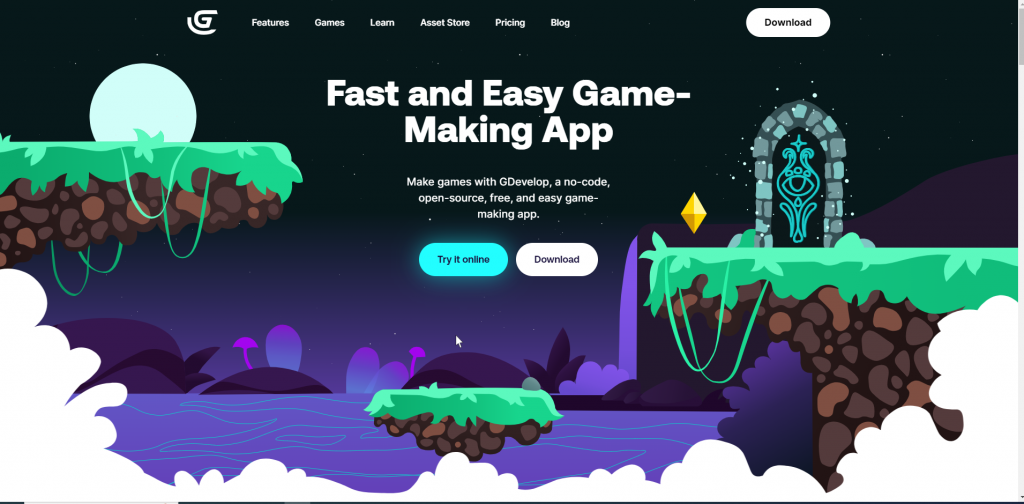
An open-source 3D gaming tool with an intuitive and easy-to-use interface. It supports HTML5 and native games, allowing for the creation of games across various platforms. The tool also comes with comprehensive documentation for quick learning, making it ideal for developers of all skill levels. Multi-language support ensures that developers worldwide can access the tool, opening up possibilities for collaboration and innovation. Overall, GDevelop is a powerful and accessible tool for creating 3D games that offers flexibility, ease of use, and support for a range of game development needs.
2. Kodu Game Lab

This is a drag-and-drop game development tool for kids to create 3D computer games. It offers pre-made worlds and objects that can be programmed with when/do commands. It runs on Xbox 360, allowing for a unique gaming experience and fostering programming.
3. Roblox
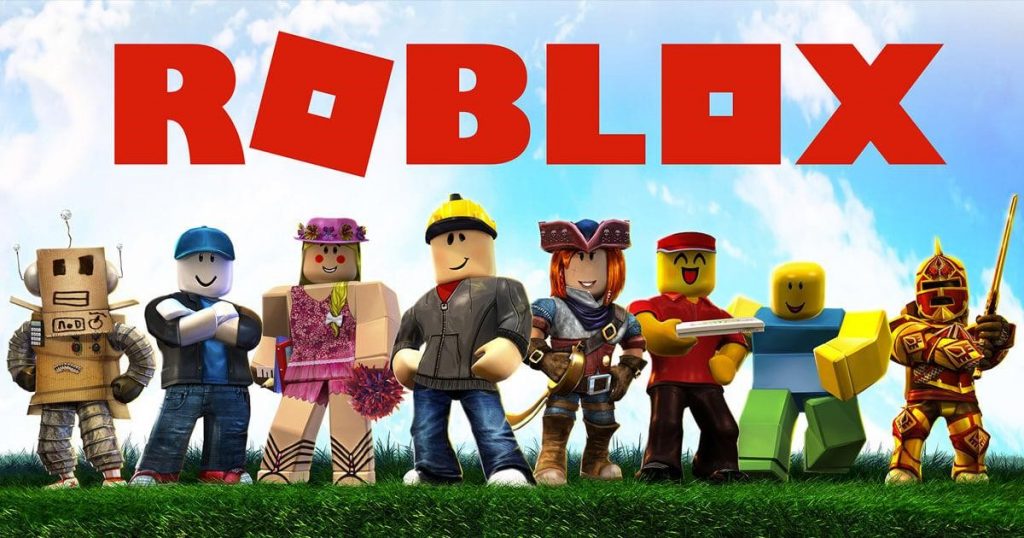
This is a highly popular game development platform for kids, offering a range of features that allow them to design and share their own games. With the ability to play and build games, as well as earn currency in the form of Robux, children can engage with their peers and have fun in a safe online environment. What’s more, Roblox also teaches kids the basics of the Lua programming language, enabling them to customize their games with advanced features and learn valuable coding skills in the process.
4. Minecraft
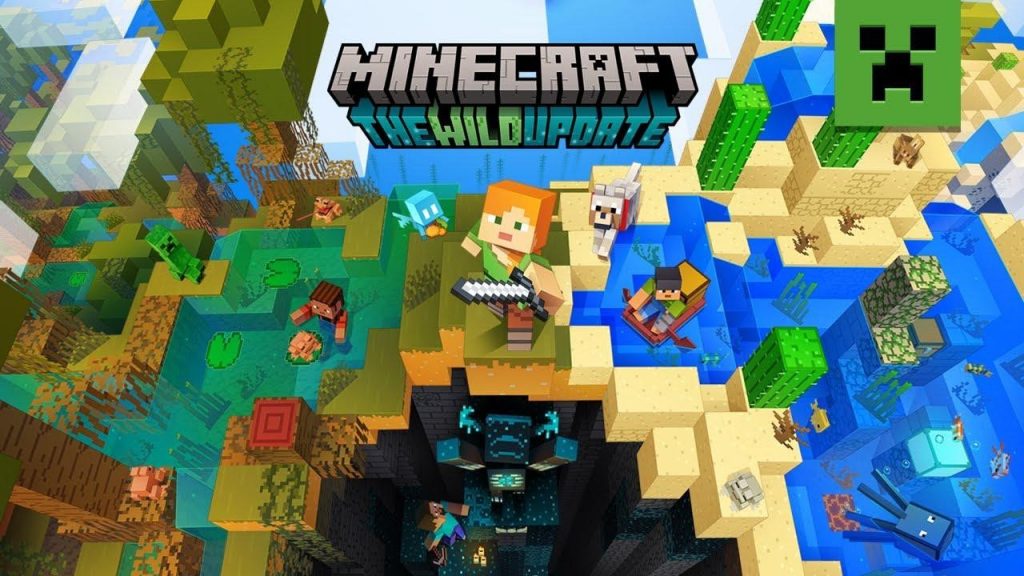
This is a game design tool that offers kids an unprecedented level of creative freedom. With Minecraft, children can build and explore their own unique worlds, allowing their imaginations to run wild. However, Minecraft is more than just a game. It also provides kids with the opportunity to learn how to design mods, which can be used to enhance the gameplay experience for themselves and other users. By creating their own mods, children can develop their programming skills and gain valuable experience in game design.
5. Alice
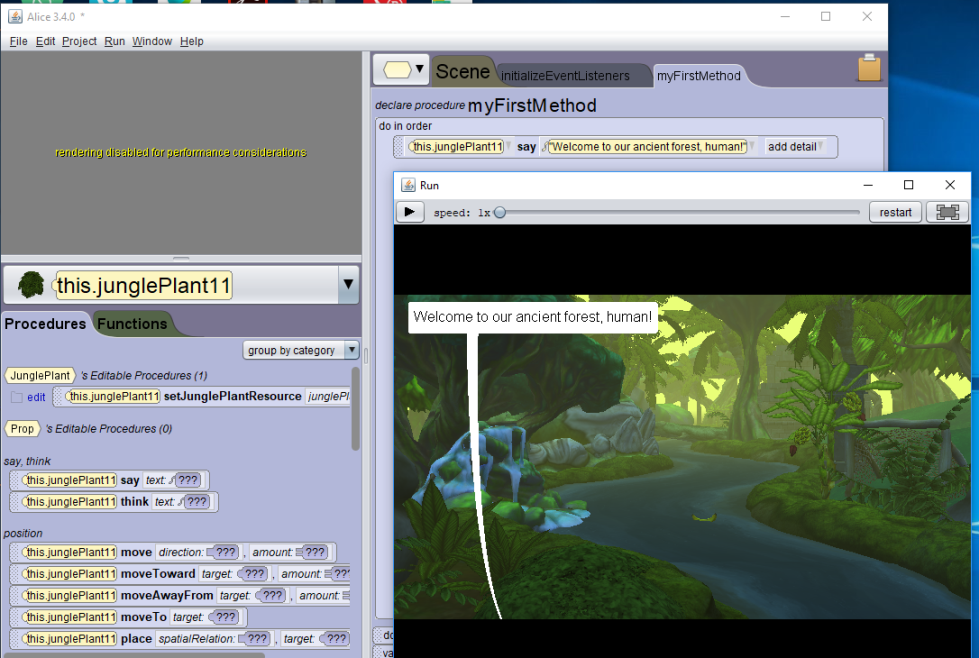
This is a versatile programming tool that enables users to create 3D animations, interactive narratives, and simple games through an intuitive block-based interface. By providing a creative and exploratory approach to learning, Alice stands apart from many other puzzle-based coding applications. With Alice, users can develop their programming skills while unleashing their creativity, making it an ideal tool for both beginners and advanced learners alike.
6. Unity
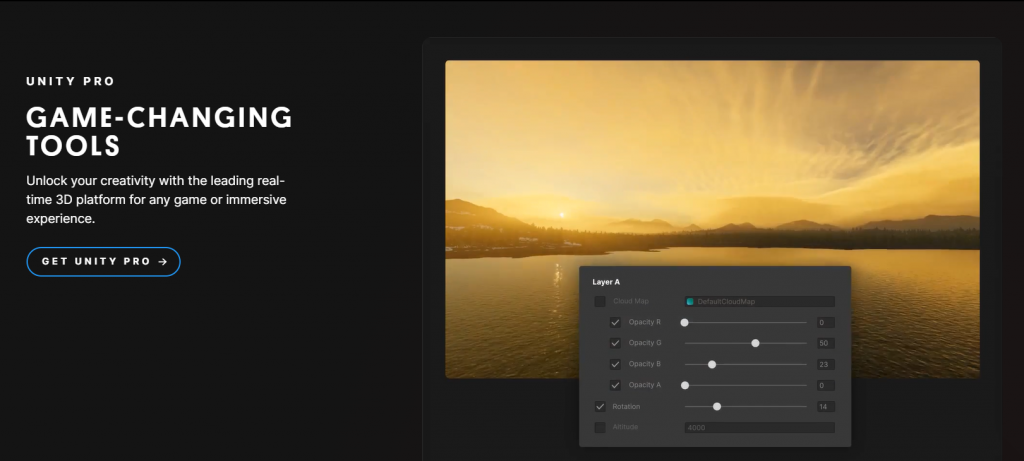
Unity is a versatile 3D/2D game engine and a powerful cross-platform IDE for developers. It comes equipped with built-in features that make game development more accessible, such as physics, 3D rendering, and collision detection. This means developers can focus on creating unique game mechanics without worrying about the underlying technicalities. With Unity, developers can create games for multiple platforms with ease and efficiency, making it an ideal tool for both beginners and professionals.
7. Buildbox
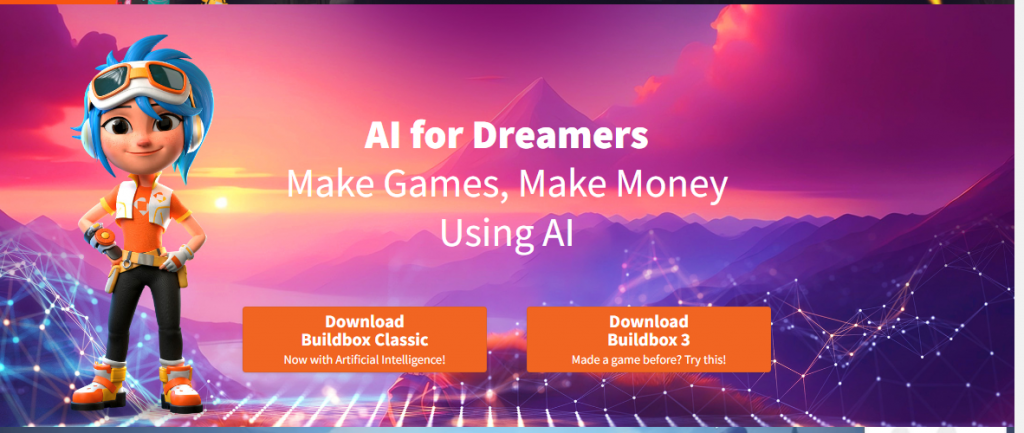
Buildbox is game development software that allows anyone to create impressive 3D and 2D games without any programming or technical skills? Its intuitive user interface provides a seamless game-building experience, enabling users to design, build, and publish games in a way that suits their preferences.
8. Godot
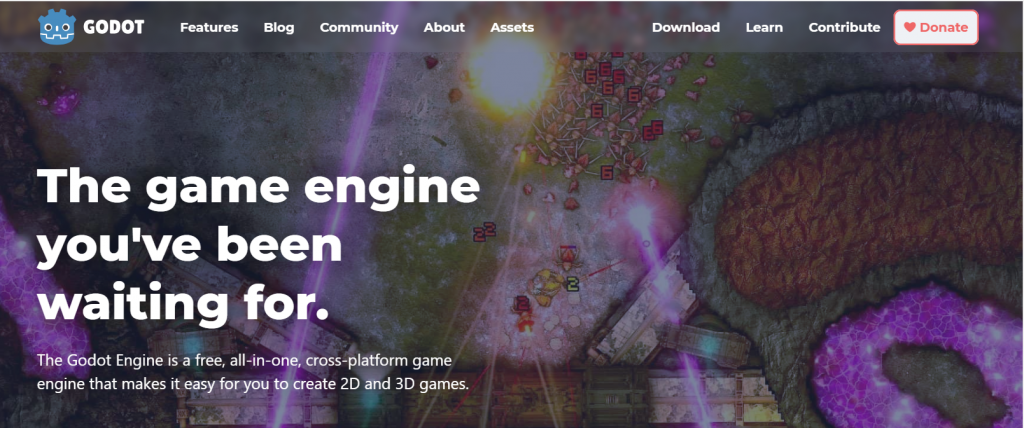
This engine is a comprehensive and free game engine that supports the creation of 2D and 3D games across multiple platforms. With an intuitive scene-driven design and versatile coding tools, Godot empowers developers to create games that fit their unique needs. It is powerful 3D engine and specialized 2D workflow offer a range of tools to design games and apps, making it an ideal choice for both beginners and advanced users.
9. GameMaker Studio 2
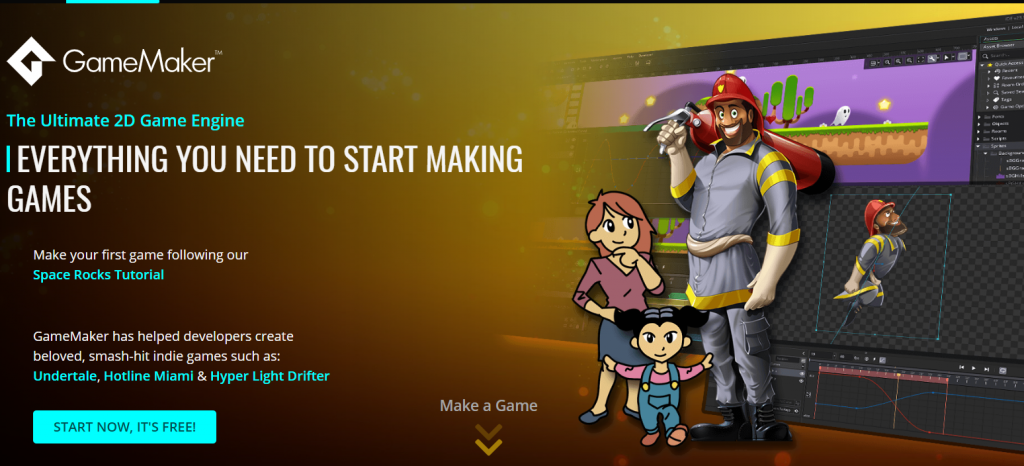
It is a versatile game design software that caters to novice game designers, indie developers, and professionals. It’s an ideal entry-level tool for game design but also offers rapid game prototyping features for experienced designers. With GameMaker, users can design both 2D and 3D games with a full-stack approach that includes programming, sound, logic, level design, and compilation tools.
10. HatchXR
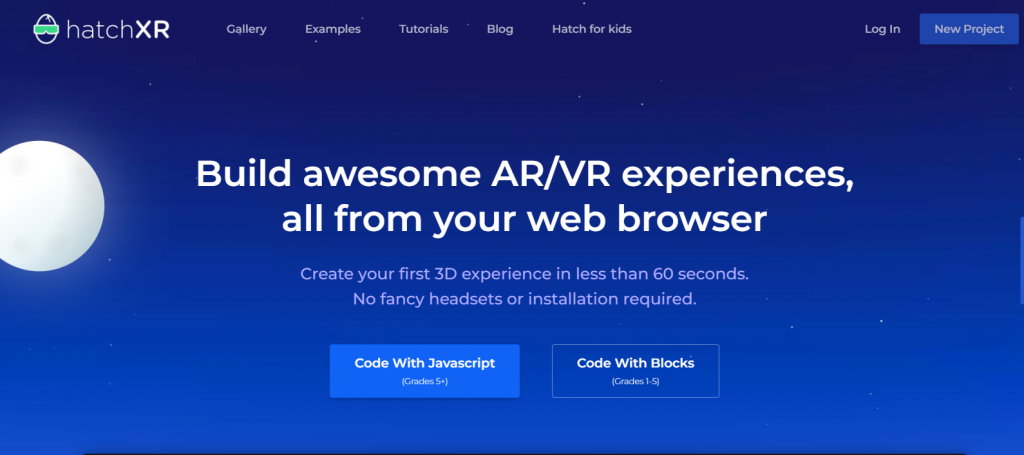
HatchXR lets you create 3D experiences in under a minute without any special equipment. Add animations and interactivity without coding or using JavaScript for custom interactions. Publish and share easily. Build AR/VR experiences from your web browser with millions of assets and support from a large community of developers.
Engaging Kids in 3D Game Development
Engaging kids in 3D game development is critical to their success and enjoyment of the process. Here are some tips for engaging kids in 3D game development:
- Choose the right game development tool: Select a game development tool that is suitable for kids and offers a user-friendly interface.
- Start with simple games: Start with simple games that are easy to design and build. Simple games like puzzles, mazes, and platformers can be great for beginners.
- Encourage creativity: Encourage kids to use their imagination and creativity to design unique games. Allow them to experiment with different characters, backgrounds, and game mechanics to create something truly original.
- Make it a team effort: Encourage kids to work together in groups to design and build games. This not only fosters teamwork but also allows them to learn from each other’s strengths and weaknesses.
- Celebrate achievements: Celebrate their achievements and successes along the way. Whether it’s finishing a game or solving a challenging design problem, positive reinforcement can help kids stay motivated and engaged in the game development process.
Future of 3D Game Development for Kids
Looking ahead, the future trends in game development are likely to continue to build on these current trends, while also introducing new innovations and technologies. Some of the potential future trends in game development include:
- Enhanced VR and AR experiences: As the technology behind VR and AR continues to improve, game developers will be able to create more immersive and interactive gaming experiences that blur the lines between the virtual and physical worlds.
- Advanced AI integration: AI can be used in a variety of ways in gaming, from creating more realistic non-playable characters (NPCs) to developing more challenging opponents and even creating new game content on the fly. As AI technology continues to evolve, game developers will be able to create even more sophisticated and dynamic gaming experiences.
- Increased focus on mobile gaming: With the rise of mobile gaming, developers will need to create games that are optimized for smaller screens and touch-based controls. In addition, mobile games are likely to become even more social and interconnected, allowing players to connect and compete with each other no matter where they are in the world.
- Greater use of cloud-based gaming: Cloud-based gaming allows players to stream games directly from the internet, without the need for high-end hardware or expensive consoles. As this technology becomes more widely available, game developers will be able to reach a wider audience and create games that can be played on a variety of devices.
- Continued growth of esports: Esports (electronic sports) have exploded in popularity in recent years, with millions of people tuning in to watch professional gamers compete in tournaments around the world. As esports continue to grow, game developers will need to create games that are not only fun to play, but also engaging to watch and easy to follow for spectators.
Overall, the future of game development is likely to be shaped by a combination of technological innovation, changing consumer preferences, and the evolving gaming industry landscape. As always, the most successful game developers will be those who are able to anticipate and adapt to these trends, while also creating games that are engaging, entertaining, and unforgettable.
3D Game Development with SkoolOfCode
SkoolOfCode’s 3D game development course is an excellent opportunity for kids to learn about programming and game development in a fun and engaging way. The course focuses on easy 3D game development for kids, allowing them to create their own games from scratch. By using block coding for kids, a kid-friendly coding method, children can easily grasp the basics of coding and start building their 3D games.
The course covers various aspects of game development, including math and physics concepts that are integral to creating immersive gaming experiences. By understanding how these concepts apply to game design, kids can develop critical thinking and problem-solving skills while having fun. Moreover, the course incorporates UI design, teaching children how to create user-friendly and visually appealing interfaces for their games.
Overall, SkoolOfCode 3D game development course offers an excellent platform for kids to learn coding, programming, and game design. With its emphasis on 3D game programming for kids, easy development processes, and kid-friendly design, it’s a comprehensive program that equips children with valuable skills while fostering their passion for coding and gaming.
Conclusion
Introducing kids to the exciting world of 3D game programming can have a profound impact on their development. Coding games for kids spark their imagination, encourages creativity, and promotes problem-solving skills. Moreover, it allows them to express themselves through a medium that they love, and it provides them with a sense of accomplishment and pride. The benefits of programming 3D games for kids are numerous, and choosing the right development tools can make the experience more accessible and enjoyable. By engaging kids in 3D game development, we are also preparing them for the future, as the demand for skilled programmers continues to grow. Skoolofcode is an excellent resource for kids who want to learn 3D game development in a fun and engaging way. Overall, programming 3D games is a rewarding and valuable experience for kids of all ages, and it can help them develop skills that will serve them well throughout their lives.
Unlock your child’s creativity and let their imagination soar with SkoolOfCode’s 3D Game Development course – Book a trial class today and watch them build their own virtual worlds.
Ms.Manpreet Virk, an educator at SkoolOfCode with a degree in M.Phil and Master in Computer Science. She is passionate about learning and teaching young minds.

